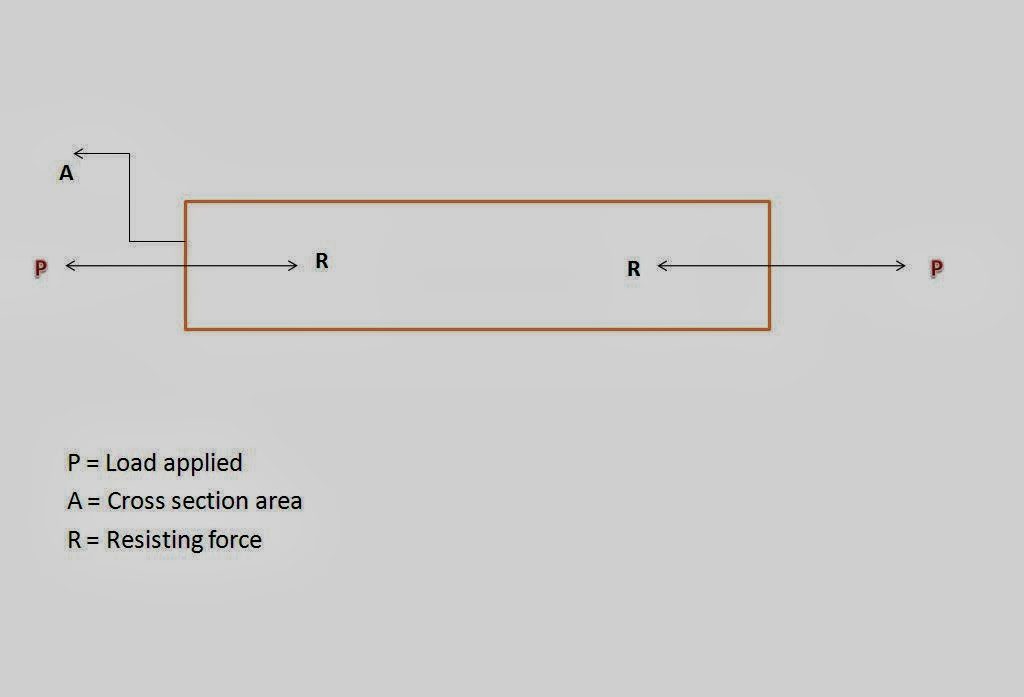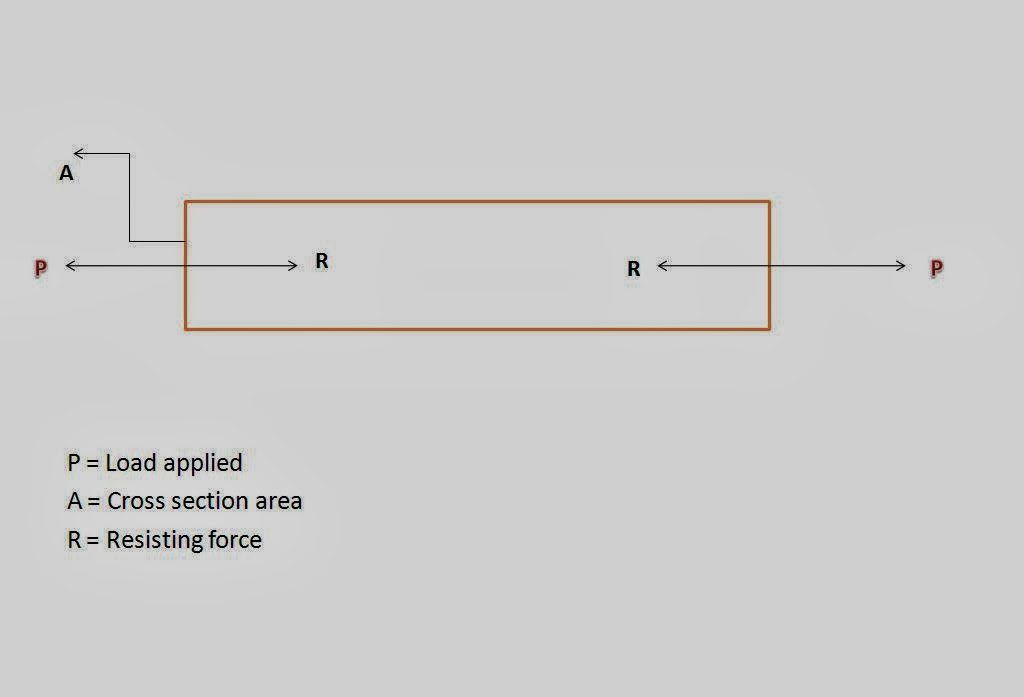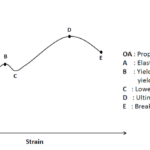In order to understand the subject mechanics of solids (or strength of materials) , first we must know the meaning of strength of materials. When an external force is applied on the body in the form of push or pull, the body tends to undergo some deformation. But due the existence of cohesive forces between the molecules, the body resist this deformation. So this resistance by which a body resists deformation is called strength of material. Within certain limit (i.e. in the elastic stage) the magnitude of the resistance force is equal to the magnitude of the force applied on the body. But beyond the elastic stage the resistance force within the body is less than the applied load.
What is Stress?


Considered a body having cross section area A. when a force (or load) either in the form of pull or push is applied on the body. Due to the cohesive forces between the molecules, a resisting force is induced within the body. This resisting force induced resist the deformation to occur in the body. Within a certain limit (Elastic limit), the magnitude of the resisting force is equal to the force applied, but opposite in direction.
Formula of Stress
Stress is the resistance force per unit area offered by a body against deformation. In other words it is the ratio of the resistance force to the cross-section area of the body.
Mathematically,
Stress = Resisting Force/Area
σ = R/A
Since,
R = Force or load applied
Let, force applied on the body = P
Then,
σ = P/A
Generally stress is also defined as the load applied per unit area of the body.
Lets check your grasp on the topic.
- What is the reason behind the origin of resisting forces within the body?
2. What is the strength of material?
3. Under what condition the magnitude of resisting force is equal to the applied load.
4. What is stress?
5. Try to fill the missing words:
- The resistance force offered per unit area by a body to resist deformation is called ______________.
- The direction of the resisting force is ___________ to the direction of the ______________.
- Beyond elastic stage the magnitude of the resisting force is ______________ than the applied load.









